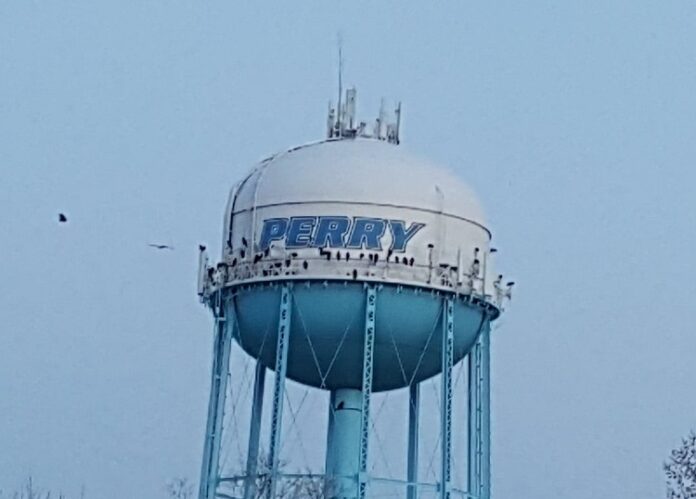The annual invasion of turkey vultures is well underway in the Perry area, and the city leaders are looking for ways to turn away the roosting raptors, including killing a few to use to ward off the rest.
The Perry City Council approved Feb. 1 a resolution authorizing the application for renewal of the city’s Federal Migratory Bird Depredation (DPRD) permit through the Migratory Bird Permit Office in Minnesota, an office of the U.S. Department of the Interior’s U.S. Fish and Wildlife Service.
The DPRD authorizes the city to kill — “harvest” is the preferred euphemism — as many as five birds in order to reduce their damage or to protect human health and safety. Turkey vultures are protected by the Migratory Bird Treaty Act of 1918.
A depredation permit is intended to provide short-term relief until long-term, non-lethal measures can be implemented to reduce or eliminate the damages. The city of Perry first applied for a DPRD permit in 2013 and has renewed it every year in an effort to mitigate the turkey-vulture nuisance because non-lethal measures have not worked so far.
The permit must be renewed annually. It sanctions the taking of as many as five turkey vultures. The carrion-eaters’ droppings are not a direct health hazard to humans, but their waste does kill vegetation and creates a stench.
The life expectancy of a turkey vulture in the wild is about 15 years, according to avian wildlife specialists, and captive birds have been know to live as long as 30 years.
Over the last few years, officers of the Perry Police Department have shot several turkey vultures outside the city limits, and the carcasses were then presented to the Perry Volunteer Fire Department, which used ladders to hang the dead birds in their fellow vultures’ favored roosting areas around town.
In discussions about the annual problem, members of the Perry City Council have also suggested various ways to ward off the birds, such as making loud noises or hanging shiny objects in the roosting spots, both methods reportedly used successfully elsewhere.
The flocks of large raptors have once again returned with the spring, and the city is addressing the chronic quality-of-life issue.


















My thought is that the raptors come here for a reason. They are carrion birds. I believe they actually help keep our town clean and are likely attracted because of the river and the meat-packing plant. I dislike the idea of culling and do not consider them to be a nuisance. The are beautiful when they are in flight, and they don’t make a lot of noise. My family are birdwatchers. We are science oriented, and we love all birds and all wildlife.